Welcome to the ultimate guide for finding the best grass seed for your Vermont lawn! As a seasoned lawn care expert with years of experience in cultivating beautiful lawns across various climates, I understand the challenges and nuances that come with selecting the perfect grass seed. If you’re short on time, here’s the quick answer: Kentucky Bluegrass is an excellent option. But don’t stop here, as we have plenty more details and options to share with you.
But growing a lush, green lawn in Vermont can be a challenge due to the state’s cold winters, short growing season, and varied soil conditions. In this article, we’ll explore the top grass seed options that are well-suited for Vermont’s unique climate and provide you with practical tips to achieve a beautiful lawn.
So, let’s dive in and discover the perfect grass seed for your Vermont lawn.
Kentucky Bluegrass
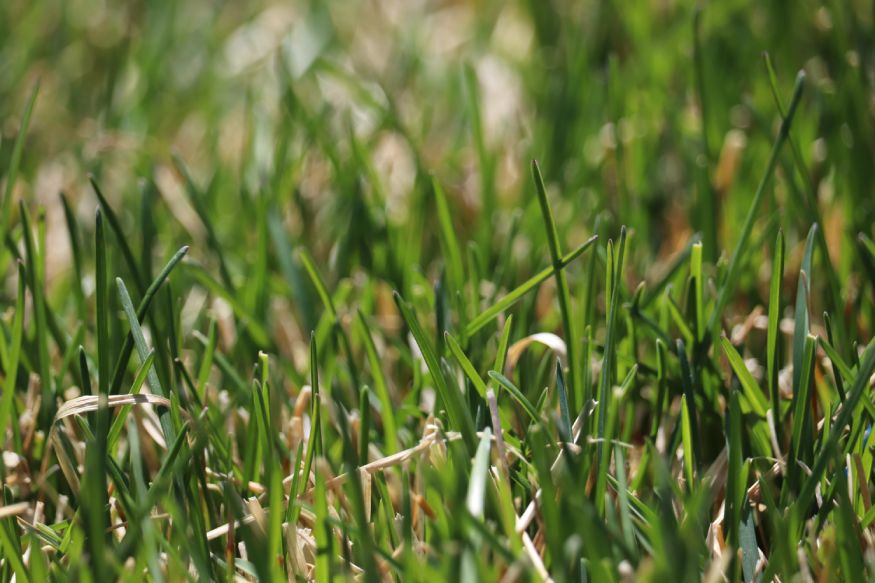
| Also Known As | Poa pratensis L. |
| Type of Grass | Cool season perennial |
| Optimal Zones | Northern cool season zone, transition zones |
| Root Structure | Shallow |
| Winter hardiness | Excellent |
| Shade tolerance | Poor to Good |
| Water Requirements | High |
| Drought Tolerance | Poor |
| Self Repair Capacity | Excellent |
| Overall Maintenance Requirements | High |
Why Kentucky Bluegrass is The Most Popular Choice For Vermont
Kentucky Bluegrass is a popular choice for homeowners in Vermont due to its adaptability to the climate and its many benefits. This cool-season grass thrives in the spring and fall, making it an excellent choice for Vermont’s climate. With its high-quality turf and attractive green color, Kentucky Bluegrass is visually appealing and resilient, thanks to its good recuperative ability.
Not only is Kentucky Bluegrass durable, but it also spreads by rhizomes to form a uniform sod that can withstand heavy foot traffic and dog traffic, which is ideal for lawns where sports or activities will be played. Its soft texture also makes it easy on bare feet, making it a great choice around pools and other outdoor areas.
Another benefit of Kentucky Bluegrass is its extreme cold-hardiness, making it an excellent choice for Vermont’s harsh winters. To maintain healthy Kentucky Bluegrass, water it deeply and infrequently, about 1 to 1.5 inches per week, to encourage deep root growth and drought tolerance. It is also important to mow Kentucky Bluegrass at the right height to prevent scalping and heat stress. In the spring and fall, mow it to a height of 2.5 inches, and in the summer, mow it to 3.5 inches.
To keep Kentucky Bluegrass fertilized, it’s best to fertilize it four times a year, in early spring, late spring, early fall, and late fall, with a balanced fertilizer containing nitrogen, phosphorus, and potassium. Aeration is also essential to reduce soil compaction and improve water and nutrient uptake. Overseeding Kentucky Bluegrass in the fall will fill in bare spots and improve turf density.
I have seen the beauty and durability of Kentucky Bluegrass firsthand in Vermont’s climate. Its adaptability and resilience make it an excellent choice for homeowners looking to improve their lawn’s appearance and health.
Looking for the best grass seed for your region?
Our smart lawn plans are designed to work perfectly with your local soil and climate conditions, without any of the toxic stuff.
Use the code EHG20 for an instant $20 discount!
- Personalized lawn care: Custom lawn plans based on soil analysis, climate data, and your specific lawn needs.
- Convenience with a conscience: Products that are not only easy to use but also safe for you, your pets, and the planet.
- Science-backed formulas: Bio-based formulas contain effective, natural ingredients like seaweed, molasses, and iron.
- Expert support: Get one-on-one guidance from a real person and rest easy with Sunday's satisfaction guarantee.
Perennial Ryegrass
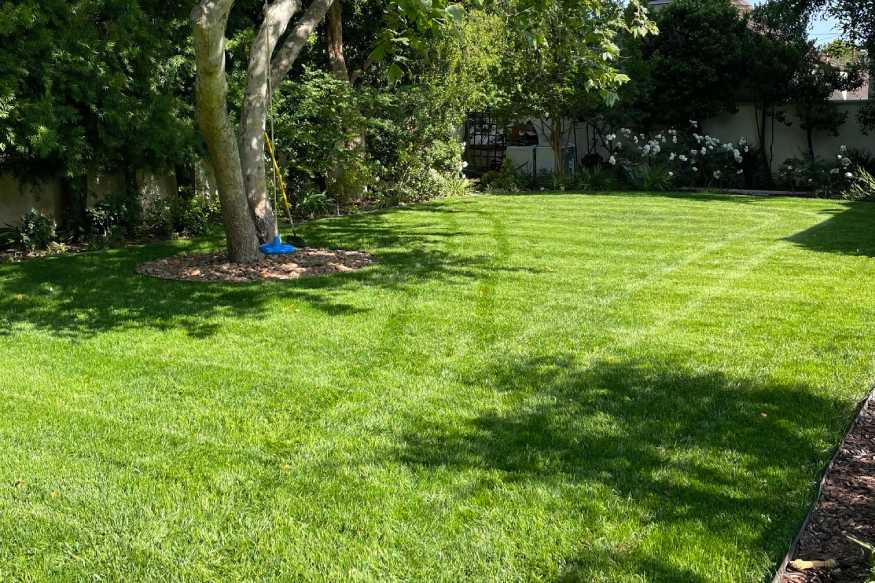
| Also Known As | Lolium perenne L. |
| Type of Grass | Cool season perennial |
| Optimal Zones | Mild northern zones |
| Root Structure | Deep |
| Winter hardiness | Good to excellent |
| Shade tolerance | Moderate |
| Water Requirements | High |
| Drought Tolerance | Good |
| Self Repair Capacity | Excellent wear tolerance |
| Overall Maintenance Requirements | Moderate to high |
What Makes Perennial Ryegrass A Great Grass For Vermont
Perennial Ryegrass is another cool-season grass that is ideal for lawns in Vermont. It has a fine-bladed texture and a dark green color, making it visually appealing. This grass type is known for its fast germination rate and quick establishment, making it an excellent choice for overseeding or repairing bare spots. In addition, Perennial Ryegrass can tolerate the cold winters and short growing seasons of Vermont.
To maintain a healthy lawn, it is essential to water Perennial Ryegrass deeply and regularly, especially during hot and dry periods, to prevent wilting and browning. Mow the grass at a height of 2 to 3 inches, keeping the blades sharp and removing no more than one-third of the grass height at a time.
Fertilize the grass in spring and fall with a balanced fertilizer that contains nitrogen, phosphorus, and potassium, following the label directions.
It is also essential to aerate Perennial Ryegrass once or twice a year, preferably in spring or fall, to reduce soil compaction and improve water and nutrient uptake. Overseed the grass in fall to maintain turf density and vigor, using a compatible grass seed mix.
However, it is important to note that Perennial Ryegrass has poor shade tolerance and may thin out in areas with less than six hours of sun per day. It also has low drought tolerance and may require more watering than other cool-season grasses. Moreover, Perennial Ryegrass may be susceptible to diseases such as gray leaf spot, brown patch, and rust, especially in humid or wet conditions.
Tall Fescue
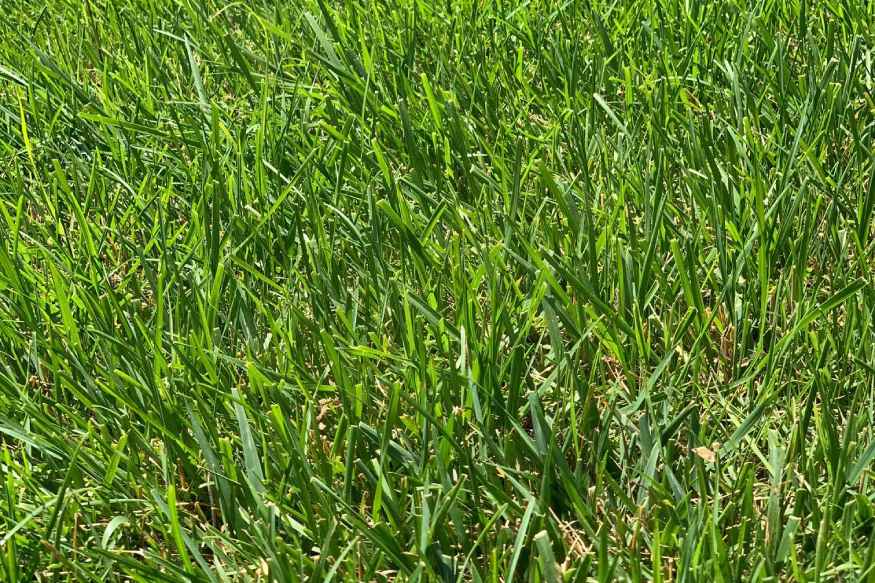
| Also Known As | Lolium arundinaceum (formerly Festuca arundinacea) |
| Type of Grass | Cool season perennial |
| Optimal Zones | Northern through transition zones |
| Root Structure | Deep |
| Winter hardiness | Excellent |
| Shade tolerance | High |
| Water Requirements | Medium to High |
| Drought Tolerance | Excellent |
| Self Repair Capacity | Limited |
| Overall Maintenance Requirements | Low |
Why Tall Fescue Grows well in Vermont
For another grass seed option for your Vermont lawn, look no further than Tall Fescue. This cool-season grass is well-suited for the Vermont climate, thanks to its ability to withstand cold winters and its short growing season.
Here’s why Tall Fescue should be at the top of your list:
- Deep root system: This enhances drought tolerance, reducing the need for frequent watering and fertilizing.
- Coarse-textured blades and dark green color: These provide a distinctive appearance and good wear resistance.
- Tolerates moderate shade and heat: Perfect for lawns with varying sun exposure and summer stress.
To keep your Tall Fescue lawn healthy, follow these tips:
- Water deeply and infrequently, about 1 inch per week.
- Mow at a height of 2.5 to 4 inches, keeping the blades sharp and removing no more than one-third of the grass height at a time.
- Fertilize in spring and fall with a balanced fertilizer containing nitrogen, phosphorus, and potassium.
- Aerate once or twice a year, preferably in spring or fall.
- Overseed in fall with a compatible grass seed mix.
However, keep in mind that Tall Fescue:
- May struggle in regions with severe winters or heavy snow cover.
- Has low salt tolerance and can be damaged by road salt or saline soils.
- Can be susceptible to diseases like brown patch, gray leaf spot, and pythium blight in humid or wet conditions.
- May not blend well with other cool-season grasses due to its coarse texture and clumping growth habit.
Fine Fescue
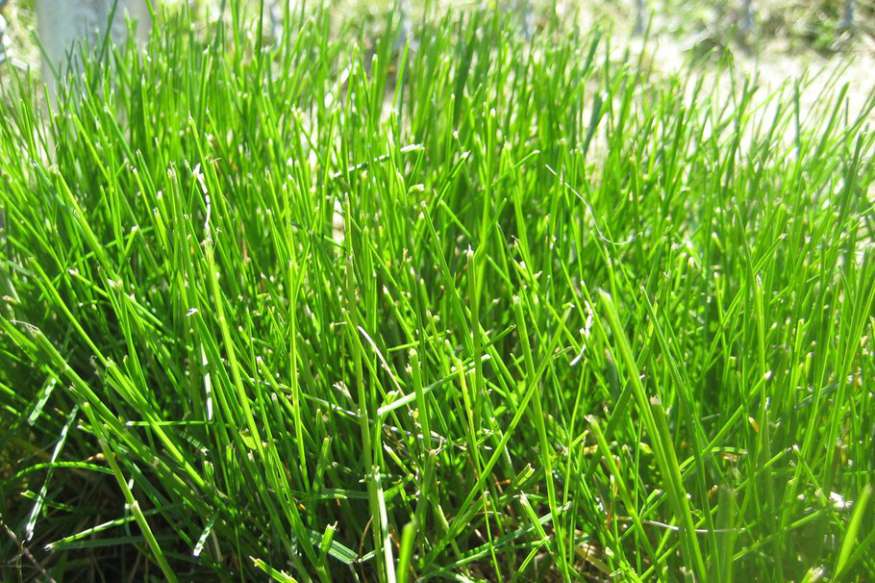
Why Fine Fescue Is a Popular Grass seed Choice
Fine Fescue is another ideal grass for Vermont lawns, thanks to its low water requirement, deep root system, and cold tolerance. Its fine-textured blade and bright green color make it visually appealing, and it can tolerate shade and heat, making it suitable for varying sun exposure and summer stress.
Benefits of Fine Fescue include:
- Dense turf that competes with weeds and prevents soil erosion when mixed with other cool-season grasses.
- Low maintenance requirements.
For a healthy Fine Fescue lawn, follow these guidelines:
- Water deeply and infrequently, about 0.75 to 1 inch per week.
- Mow at a height of 2 to 3 inches.
- Fertilize in spring and fall with a balanced fertilizer containing nitrogen, phosphorus, and potassium.
- Aerate once or twice a year in spring or fall.
- Overseed in fall with a compatible grass seed mix, such as Pennington Smart Seed Dense Shade Grass Seed Mix.
Take note that Fine Fescue:
- May suffer under heavy foot traffic or pet activity.
- Has low salt tolerance and can be damaged by road salt or saline soils.
- Can be susceptible to diseases like red thread, dollar spot, and brown patch in humid or wet conditions.
Vermont’s Climate And Growing Challenges For Lawns
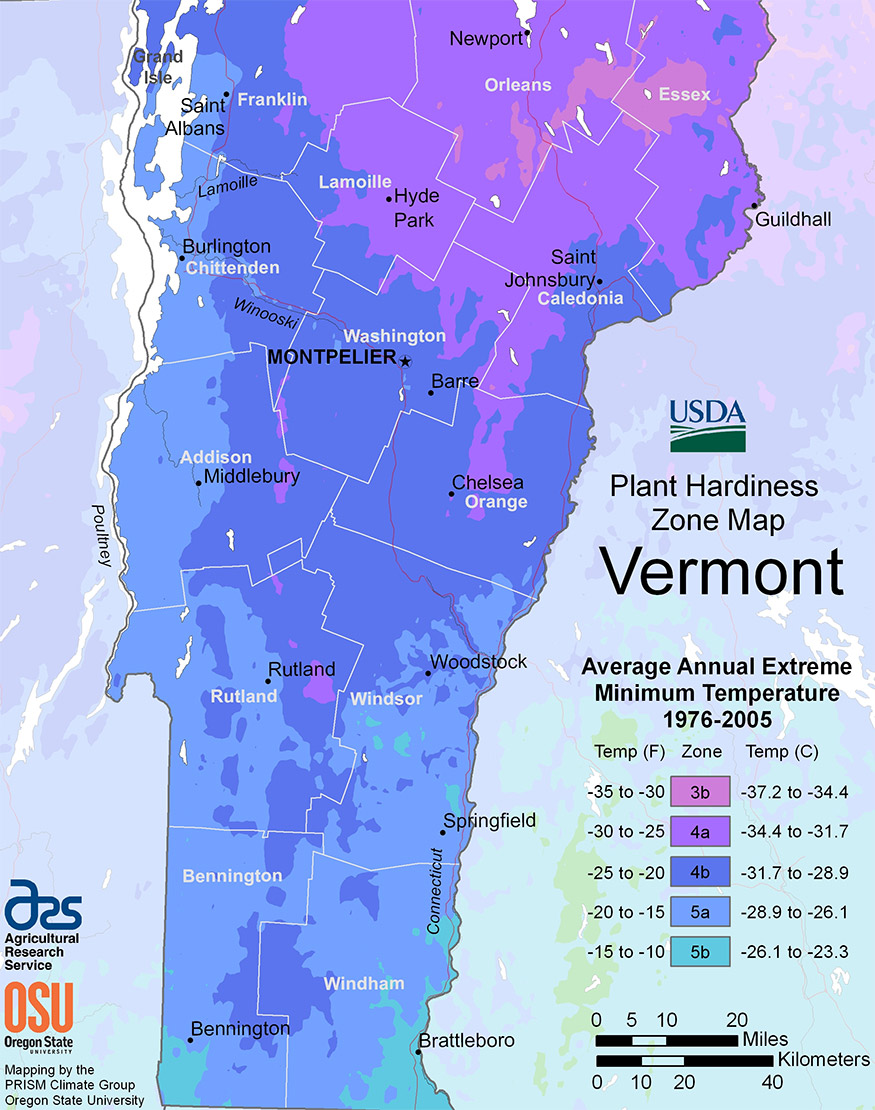
Vermont’s cold, snowy winters and short growing seasons present unique challenges for homeowners looking to maintain a lush and healthy lawn. Additionally, factors like varying soil and climatic conditions, high traffic areas, shade, salt exposure, weed competition, and disease and insect problems can further complicate lawn care in the Green Mountain State.
Cold Winters and Short Growing Seasons
Vermont’s cool-season grass zone means that grasses growing well in the spring and fall seasons are preferred. Opt for grasses with good cold tolerance and winter hardiness, such as fine fescue and Kentucky bluegrass.
My own experience having a lawn in Vermont-like conditions has shown that these grass types can withstand the harsh winters and bounce back during the short growing seasons.
Varying Soil and Climatic Conditions
Vermont’s diverse landscape means that soil and climatic conditions can vary greatly depending on the region and elevation. Choose grasses that can adapt to a wide range of soil types and pH levels, as well as drought and heat stress, like tall fescue and perennial ryegrass.
Shade
In Vermont, many areas have moderate to dense shade due to trees and buildings. To maintain a healthy lawn in these conditions, opt for grasses that can tolerate shade and low light levels, such as fine fescue and perennial ryegrass.
Salt Exposure
Road salt or saline soils can be an issue in Vermont due to snow removal or irrigation. Go for grasses with moderate to high salt tolerance, like tall fescue and perennial ryegrass, to combat these challenges.
Weed Competition and Soil Erosion
Vermont lawns can face weed competition and soil erosion due to bare spots or thin turf. To prevent this, choose grasses that form a dense turf, like tall fescue and Kentucky bluegrass, which can compete with weeds and prevent soil erosion.
Disease and Insect Problems
Humid or wet conditions in Vermont can lead to disease and insect problems. To minimize these issues, pick grasses with good disease and insect resistance, such as fine fescue and perennial ryegrass.
Looking for the best grass seed for your region?
Our smart lawn plans are designed to work perfectly with your local soil and climate conditions, without any of the toxic stuff.
Use the code EHG20 for an instant $20 discount!
- Personalized lawn care: Custom lawn plans based on soil analysis, climate data, and your specific lawn needs.
- Convenience with a conscience: Products that are not only easy to use but also safe for you, your pets, and the planet.
- Science-backed formulas: Bio-based formulas contain effective, natural ingredients like seaweed, molasses, and iron.
- Expert support: Get one-on-one guidance from a real person and rest easy with Sunday's satisfaction guarantee.
Frequently Asked Questions
What are the best types of grass for Vermont?
The best types of grass for Vermont are cool-season grasses that can tolerate the cold winters and short growing seasons of the state. The most common types of cool-season grasses are:
- Kentucky bluegrass
- Perennial ryegrass
- Fine fescue
- Tall fescue
You can also find customized combinations that you can plant to combat specific issues in your lawn, such as pests or shade tolerance.
When is the best time to plant grass seed in Vermont?
The optimal time to plant grass seed in Vermont is in late summer and early fall, between August and September. This is when the soil temperature is perfect for germination, and the weather is mild enough for establishment. Spring can also be a good time to plant grass seed in Vermont, as long as you wait until average high temperatures reach the 60s and the soil is dry enough to avoid creating mud.
How much water does grass need in Vermont?
The amount of water that grass needs in Vermont depends on the type of grass, the soil type, and the weather conditions. Generally, grass needs about 1 to 1.5 inches of water per week, either from rainfall or irrigation. However, some grasses may need more or less water depending on their drought tolerance and root depth. For example:
- Fine fescue: low water requirement and a deep root system that enhances its drought tolerance
- Kentucky bluegrass: high water requirement and a shallow root system that makes it more susceptible to wilting and browning
How often should I mow my lawn in Vermont?
The frequency of mowing your lawn in Vermont depends on the type of grass, the height of the grass, and the growth rate of the grass. Generally, you should mow your lawn when it reaches one-third above the recommended mowing height for your grass type. For example, if your grass type has a recommended mowing height of 2.5 inches, you should mow it when it reaches 3.3 inches. This will prevent scalping and stress on your lawn. Remember to keep your mower blades sharp and remove no more than one-third of the grass height at a time.
How do I prevent weeds and diseases in my lawn in Vermont?
The best way to prevent weeds and diseases in your lawn in Vermont is to maintain a healthy and dense turf that can compete with weeds and resist diseases.
To achieve this, follow these steps:
- Choose the right type of grass for your area
- Plant it at the right time
- Water it properly
- Fertilize it regularly
- Mow it correctly
- Aerate it occasionally
- Overseed it if needed
- Monitor it for signs of problems
You can also use pre-emergent or post-emergent herbicides to control weeds or fungicides to treat diseases if necessary.
